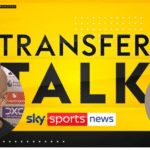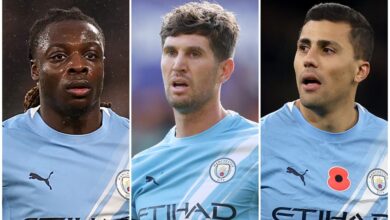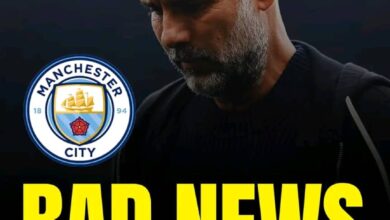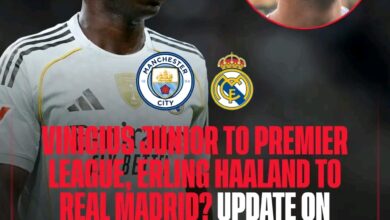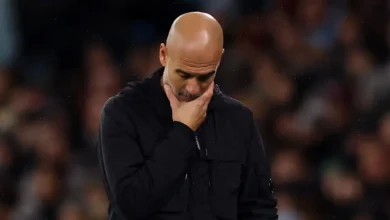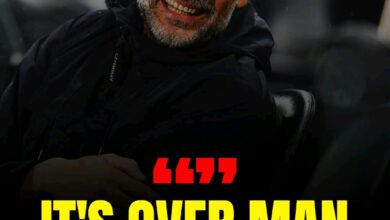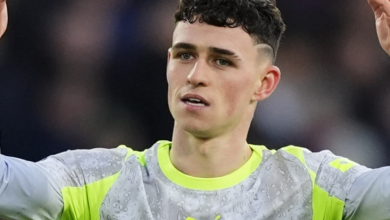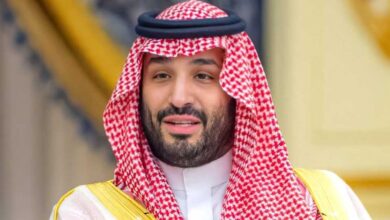Manchester City Secure Signing of Prolific 42-Goal PSG Forward Mahamadou Sangare in Strategic Youth Acquisition
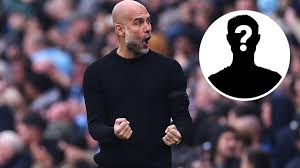
Manchester City have once again demonstrated their commitment to building for the future with the acquisition of one of European football’s most promising young talents. The Premier League champions have secured the signature of Paris Saint-Germain striker Mahamadou Sangare, as exclusively confirmed by renowned transfer specialist Fabrizio Romano yesterday evening.
The 18-year-old French youth international has been nothing short of sensational at academy level, amassing an extraordinary 42 goals in just 46 appearances for PSG’s youth teams—statistics that caught the attention of Europe’s elite clubs, including Chelsea and Manchester United, who both showed concrete interest in the teenager.
Romano’s confirmation came via his social media channels, stating: “Manchester City have agreed a deal to sign 18-year-old Paris Saint-Germain striker Mahamadou Sangare. While City are focused on rebuilding Guardiola’s first team this summer, they are also making an effort to bolster their youth ranks with elite talent for the future.”
The deal represents a significant coup for City’s recruitment team, who have moved decisively to secure Sangare’s services as his contract with the Ligue 1 champions expires this summer. The forward will join City on July 1st, with only training compensation owed to PSG under FIFA regulations regarding the development of youth players.
The Sangare Profile: A Deep Dive into City’s New Attacking Prospect
Standing at 6’1″ with a lean but developing frame, Sangare represents the modern prototype of what clubs look for in young strikers. Technical analysis of his performances for PSG’s U19 squad reveals a complete forward with remarkable versatility in his finishing repertoire.
His 42-goal haul across 46 matches breaks down impressively: 31 goals in domestic competitions, 8 in the UEFA Youth League, and 3 in friendly tournaments. More notable is the variety—11 headers, showcasing excellent aerial ability for his age; 24 right-footed finishes displaying his natural preferred foot; 7 with his left, indicating well-rounded technical development.
Beyond pure numbers, what has impressed scouts is Sangare’s mature understanding of movement and positioning. Heat maps from his UEFA Youth League appearances show an intelligence beyond his years—consistently finding space between defenders and timing runs behind defensive lines with precision that belies his youth.
Antoine Dupont, former PSG youth coach who worked with Sangare during his formative years, offered this assessment: “Mahamadou combines physical attributes with exceptional technical quality. What sets him apart is his football intelligence—he reads the game three steps ahead of most players his age. If he maintains his development trajectory and work ethic, he has every quality needed to succeed at the highest level.”
Despite not yet making his senior debut for PSG, Sangare has been training with the first team since December 2024, often mentioned in dispatches from French media outlets as being particularly impressive in sessions alongside established stars. His rapid development through PSG’s age groups—often playing several years above his age category—speaks to both his physical maturity and technical readiness for the challenges ahead.
Manchester City’s Elite Youth Recruitment Strategy: A Masterclass in Talent Acquisition
Sangare’s signing represents just the latest example of City’s increasingly sophisticated approach to youth recruitment, which operates parallel to their first-team acquisition strategy. The club’s evolution under the City Football Group umbrella has seen them transition from pure financial might to a more nuanced, multi-layered approach to building sustainable success.
The appointment of Txiki Begiristain as Director of Football in 2012 marked a pivotal moment in this transformation. Under his guidance, City have implemented a global scouting network specifically focused on identifying elite talent between the ages of 15-19—prospects with both the potential to contribute to the first team and significant future transfer value.
This approach has seen City acquire talented youngsters from diverse markets:
- Domestic Recruitment: The signings of Morgan Rogers (West Bromwich Albion) and Liam Delap (Derby County) represented early moves in this direction, with both commanding significant fees despite their youth.
- European Pipeline: Players like Jayden Braaf (PSV Eindhoven), Issa Kaboré (KV Mechelen), and now Sangare (PSG) demonstrate City’s growing reputation as a destination for Europe’s brightest prospects.
- Global Vision: The reported move for American prodigy Cavan Sullivan (Philadelphia Union) and previous acquisitions like Kayky (Fluminense) highlight City’s truly international scope.
Dr. Simon Chadwick, Professor of Eurasian Sport at Emlyon Business School, contextualizes City’s strategy: “What we’re witnessing is the application of portfolio theory to football talent development. City are diversifying their talent investments across age groups, positions, and geographical markets to maximize their probability of developing elite players while minimizing risk.”
The economics behind this approach make compelling business sense. For every Phil Foden who ascends to the first team—saving the club a potential £100+ million transfer fee—there are players like Jadon Sancho and Brahim Díaz who generated significant transfer revenue (£8 million and £15 million respectively) despite never establishing themselves in City’s senior squad.
Former technical director of the Belgian Football Association, Michel Sablon, offers this perspective: “The model City have built creates multiple success scenarios. Even if only 10-15% of these young talents reach the first team, the remainder often generate substantial transfer fees that effectively make the youth academy self-sustaining, or even profitable.”
The City Academy Pipeline: A Path to the First Team
While cynics might question whether a young player like Sangare can genuinely harbor hopes of breaking into a Manchester City first team notorious for its reliance on established stars, recent evidence suggests the pathway is more viable than ever.
Under Pep Guardiola’s stewardship, academy graduates have accumulated over 30,000 Premier League minutes—a significant increase from previous City managers. The emergence of Phil Foden, Cole Palmer, Rico Lewis, and Oscar Bobb as genuine first-team contributors represents tangible evidence of the academy pipeline functioning as designed.
City’s £200 million City Football Academy facility, opened in 2014, has evolved into one of Europe’s premier development environments. The campus—spanning 80 acres and housing 16 football pitches—was designed with a clear vision: creating physical proximity between youth players and first-team stars to encourage both informal mentorship and a seamless transition between age groups.
Jason Wilcox, Manchester City’s Academy Director, explained the philosophy during a recent coaches’ convention: “Our model integrates the technical, tactical, physical, and psychological development of players. We’ve deliberately aligned our training methodologies across all age groups with the first-team requirements. When a young player trains with Pep’s squad, they’re already fluent in the positional concepts and tactical principles demanded at senior level.”
The current state of City’s academy is robust:
- The Under-21s recently secured the Premier League 2 title, finishing seven points clear of their closest rivals
- The Under-18s are set to face Aston Villa in the prestigious FA Youth Cup final later this month
- Six academy graduates featured in first-team squads during the 2024/25 season
These achievements create an environment where excellence is normalized—a culture of high performance that will benefit Sangare immensely as he integrates into his new surroundings.
The European Context: Youth Development as Competitive Advantage
Manchester City’s aggressive move for Sangare must be understood within the broader European context, where elite clubs are increasingly prioritizing youth recruitment as a cornerstone of their sporting strategy.
The combination of escalating transfer fees for established stars, financial regulations like UEFA’s Financial Fair Play, and the competitive advantage gained through developing homegrown talent has triggered something of an arms race among Europe’s top clubs.
Real Madrid’s acquisition of Brazilian teenagers Endrick and Vinicius Junior before they reached 18, Barcelona’s continued investment in La Masia despite financial difficulties, and Chelsea’s aggressive recruitment of elite prospects like Carney Chukwuemeka and Kendry Páez all exemplify this trend.
Football finance expert Kieran Maguire contextualizes this shift: “The economics of developing versus buying has fundamentally changed. When a single established starter can cost upwards of £70-80 million, investing £5-10 million in five elite prospects becomes not just fiscally prudent but potentially transformative if even one develops into a first-team caliber player.”
The COVID-19 pandemic accelerated this reality, creating additional financial pressures that made efficient talent development even more crucial. Clubs with established development infrastructure—like Manchester City—found themselves with a significant competitive advantage in this new landscape.
Statistics from the CIES Football Observatory support this trend, showing that the average age of players signed by Europe’s top 15 clubs has decreased by nearly 18 months over the past decade, with significantly increased investment in the 16-19 age bracket.
PSG’s Talent Drain: A Recurring Issue
For Paris Saint-Germain, Sangare’s departure represents yet another case of failing to retain their most promising academy talents—a persistent issue for the French giants despite their financial resources and sporting project.
The list of high-profile departures from PSG’s academy is substantial:
- Kingsley Coman (left for Juventus, now at Bayern Munich)
- Moussa Diaby (left for Bayer Leverkusen, now at Aston Villa)
- Christopher Nkunku (left for RB Leipzig, now at Chelsea)
- Tanguy Nianzou (left for Bayern Munich, now at Sevilla)
- Adrien Rabiot (left for Juventus)
- Claudio Gomes (left for Manchester City, now at Palermo)
This recurring pattern has been a source of frustration for PSG’s leadership, who have invested heavily in their training facilities at the Campus PSG in Poissy, completed in 2023 at a cost of approximately €300 million.
French football journalist Philippe Auclair attributes this phenomenon to structural issues: “Despite their resources, PSG have struggled to convince young talents that they represent the best pathway to senior football. The club’s emphasis on immediate success and marquee signings creates legitimate concerns for academy players about their realistic prospects of progression.”
For Sangare specifically, the pathway at PSG appeared potentially blocked by the presence of established forwards and the club’s historical preference for adding proven talent rather than developing from within. At City, despite their own galaxy of stars, the recent evidence of academy progression likely proved persuasive during negotiations.
The Financial Dimensions: Smart Investment, High Potential Return
While the financial details of Sangare’s agreement with Manchester City remain undisclosed, the structure of the deal highlights City’s business acumen in the transfer market.
As Sangare’s youth contract with PSG expires this summer, City will only be liable for training compensation under FIFA regulations—a fee typically calculated based on the player’s development years at his former club. For a player of Sangare’s caliber, this likely represents extraordinary value compared to what would have been required had he been under a professional contract.
Football finance analyst Stefan Szymanski suggests: “This type of acquisition exemplifies modern football economics at the elite level. The potential asymmetry between minimal initial investment and future value—either as a first-team asset or in transfer terms—creates a risk-reward profile that’s virtually unmatched in other industries.”
Industry sources indicate that City have structured a contract that balances immediate security for the player with performance-based incentives aligned with progression milestones—appearances for the Elite Development Squad, first-team integration, and eventual competitive debuts.
If Sangare fulfills even a portion of his potential, the return on investment could be substantial. Recent transfers of young forwards with similar profiles but less prolific records have commanded fees in the £20-30 million range, even without significant senior experience.
Expert Perspectives: What They’re Saying About Sangare’s Move
The reaction to Sangare’s signing has generated significant discussion among football experts and analysts, with opinions generally positive regarding both the player’s potential and City’s strategy.
French talent development expert Yannick Chandioux, who has monitored Sangare’s development, offers this assessment: “Technically, he’s exceptional—combining powerful acceleration with refined close control. His finishing repertoire is diverse: he can score opportunistic poacher’s goals but also create his own opportunities with individual skill. The physical adaptation to English football will be his primary challenge, but his frame suggests he can develop the necessary robustness.”
Former Manchester City defender Joleon Lescott, now working in the club’s academy structure, shared his thoughts via broadcast media: “What’s impressive about our recruitment is the specific profiling. We’re not just acquiring talented youngsters broadly—we’re identifying specific attributes and mentalities that align with both our playing philosophy and the character profile we value. From what I understand, Sangare fits this template perfectly.”
Tactical analyst Michael Cox notes the potential stylistic fit: “Watching Sangare’s youth matches, what’s striking is his spatial awareness and movement patterns. There’s a natural intelligence to his game that should translate well to Guardiola’s positional play system, where understanding space is often more valuable than pure athletic attributes.”
What Next for Sangare? The Development Roadmap
Upon officially joining Manchester City on July 1st, Sangare’s development pathway is likely to follow a carefully structured progression model that has proven successful with previous acquisitions.
The immediate plan, according to sources familiar with City’s development protocols, will likely include:
- Integration Phase (July-August 2025): Participation in pre-season with the Elite Development Squad, with potential inclusion in first-team training sessions depending on Guardiola’s assessment.
- Primary Development Period (2025/26 Season): Regular competition with the U21s in Premier League 2, with additional exposure in the EFL Trophy against senior League One and League Two opposition—a competition City value for its physical intensity and competitive stakes.
- Assessment Window (Summer 2026): Comprehensive evaluation to determine whether Sangare should remain in the U21 environment, join the first-team squad permanently, or benefit from a strategic loan to continue his development with regular senior football.
This methodical progression has proven effective for previous youth signings, balancing protected development with appropriate challenges to stimulate growth.
Guardiola’s hands-on involvement in youth development—he regularly attends U21 matches and training sessions—means Sangare will benefit from direct exposure to one of football’s premier coaching minds, even before any formal first-team integration.
Our View – EPL Index Analysis
From a Manchester City perspective, Sangare’s acquisition represents a textbook example of modern elite club recruitment strategy—identifying exceptional talent early, leveraging contractual opportunities, and offering a compelling development pathway despite competition from rival institutions.
For supporters, there should be genuine excitement about Sangare’s potential. His goalscoring record at youth level is genuinely exceptional, even accounting for the significant leap to senior football. The consistency of his output—scoring in 80% of his youth appearances last season—suggests a natural predatory instinct that typically translates across competitive levels.
The decision to choose City over other interested parties, including Manchester United and Chelsea, represents a significant endorsement of the club’s development infrastructure and pathway planning. That such a highly-rated prospect sees City as his optimal destination reflects the transformation of the club’s reputation over the past decade.
While patience will be essential—very few 18-year-olds make immediate first-team impact at Champions League-level clubs—the foundations for success appear firmly in place. Sangare possesses the technical tools, City provides the development environment, and recent precedents demonstrate the viability of academy-to-first-team progression.
Amid the perpetual churn of transfer rumors and speculation surrounding established stars, Sangare’s arrival represents something different but equally valuable: an investment in sustainable excellence and competitive advantage that extends beyond immediate horizons.
For a club with Manchester City’s ambitions—dominance across multiple competitions and generations—such strategic foresight in talent acquisition may ultimately prove as valuable as any marquee signing. In Mahamadou Sangare, they appear to have secured a talent worth watching very closely indeed.


